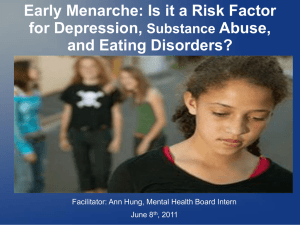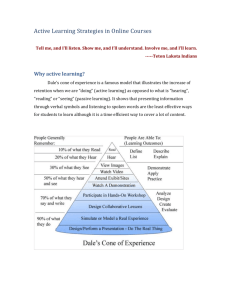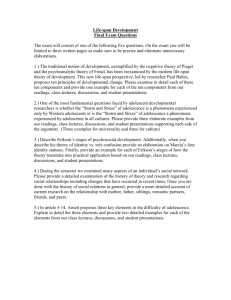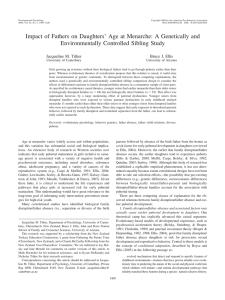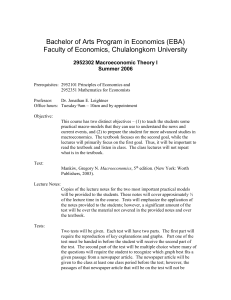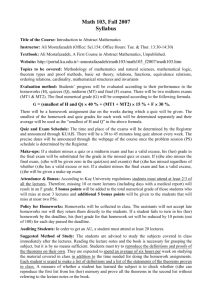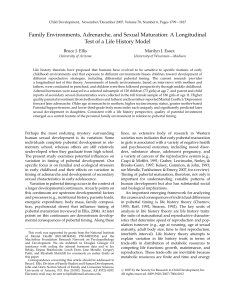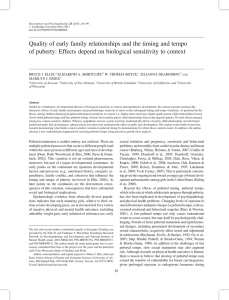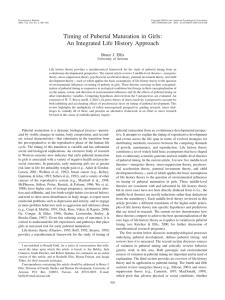psyc 112 (psych of adolescence) quiz 1 review sheet
advertisement
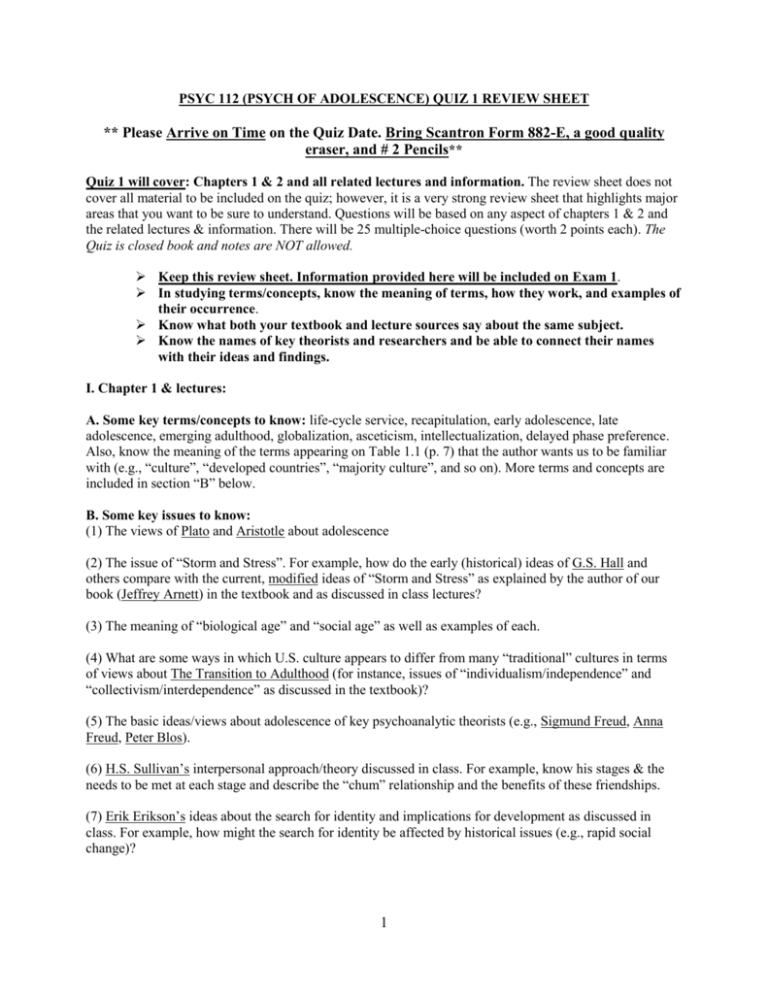
PSYC 112 (PSYCH OF ADOLESCENCE) QUIZ 1 REVIEW SHEET ** Please Arrive on Time on the Quiz Date. Bring Scantron Form 882-E, a good quality eraser, and # 2 Pencils** Quiz 1 will cover: Chapters 1 & 2 and all related lectures and information. The review sheet does not cover all material to be included on the quiz; however, it is a very strong review sheet that highlights major areas that you want to be sure to understand. Questions will be based on any aspect of chapters 1 & 2 and the related lectures & information. There will be 25 multiple-choice questions (worth 2 points each). The Quiz is closed book and notes are NOT allowed. Keep this review sheet. Information provided here will be included on Exam 1. In studying terms/concepts, know the meaning of terms, how they work, and examples of their occurrence. Know what both your textbook and lecture sources say about the same subject. Know the names of key theorists and researchers and be able to connect their names with their ideas and findings. I. Chapter 1 & lectures: A. Some key terms/concepts to know: life-cycle service, recapitulation, early adolescence, late adolescence, emerging adulthood, globalization, asceticism, intellectualization, delayed phase preference. Also, know the meaning of the terms appearing on Table 1.1 (p. 7) that the author wants us to be familiar with (e.g., “culture”, “developed countries”, “majority culture”, and so on). More terms and concepts are included in section “B” below. B. Some key issues to know: (1) The views of Plato and Aristotle about adolescence (2) The issue of “Storm and Stress”. For example, how do the early (historical) ideas of G.S. Hall and others compare with the current, modified ideas of “Storm and Stress” as explained by the author of our book (Jeffrey Arnett) in the textbook and as discussed in class lectures? (3) The meaning of “biological age” and “social age” as well as examples of each. (4) What are some ways in which U.S. culture appears to differ from many “traditional” cultures in terms of views about The Transition to Adulthood (for instance, issues of “individualism/independence” and “collectivism/interdependence” as discussed in the textbook)? (5) The basic ideas/views about adolescence of key psychoanalytic theorists (e.g., Sigmund Freud, Anna Freud, Peter Blos). (6) H.S. Sullivan’s interpersonal approach/theory discussed in class. For example, know his stages & the needs to be met at each stage and describe the “chum” relationship and the benefits of these friendships. (7) Erik Erikson’s ideas about the search for identity and implications for development as discussed in class. For example, how might the search for identity be affected by historical issues (e.g., rapid social change)? 1 (8) The main findings of studies discussed in class about perceptions of teenagers – for example, Hill & Fortenberry study; studies of the views of mental health professionals; and the teacher/parent perception study of Buchanan, et al. II. Chapter 2 & lectures: A. Some key terms/concepts to know: HPG axis, age-graded (same as “age-grading”; referring to agebased grade levels), secular trend, reaction range, puberty, menarche, spermarche, semenarche, sex hormones: androgens (testosterone) & estrogens (estradiol). More terms and concepts are included in section “B” below. B. Some key issues to know: (1) That the main structures and glands involved in pubertal changes (endocrine system) are the: hypothalamus, pituitary, thyroid, adrenal, and gonads (testes & ovaries). Generally review information in the textbook on the role of the hypothalamus, pituitary, and gonads on pubertal changes. (2) General description of “The Feedback Loop in the Endocrine System”. Also, what is its main purpose? (3) What is the “adolescent growth spurt” and how do girls and boys compare in terms of the beginning of their growth spurt? Describe “peak height velocity”. (4) Review the work of the biologist J.M. Tanner including information about the original sample of adolescents that were studied (for example, see box, “Research Focus: Tanner’s Longitudinal Research on Pubertal Development” – pp. 46-47) (5) Approximately when do menarche and spermarche occur (approx. ages of each)? (6) Describe “incest taboo” and the related idea of the “distancing hypothesis” discussed in class and explain some problems or limitations of this view. Also, see the sub-section in your book on “ParentAdolescent Relations and Puberty” for more on the notion of “distancing” and the issues of closeness and conflict in relationships with parents during puberty. (7) Describe the personal reactions/responses of youth to semenarche and menarche. For example, review information on the general responses of girls to menarche and note the main outcomes of research by Adegoke (1993) on reactions to semenarche among Nigerian boys (p.52). See the sub-section in your book on “Personal Responses to Menarche and Semenarche” for more information on this topic. (8) The psychological effects/issues of “early” and “late” pubertal maturation for girls and boys. For example, which categories (“early”, “late”) seem to be associated with characteristics thought to be most/least advantageous for males and females? (9) Describe the “direct effects” and “mediated effects” models (discussed in class) in terms of each model’s view about the relation between physiological/biological changes and ultimate psychological effects. (10) Describe the idea of “shifting of the developmental timetable” in relation to “early” and “late” pubertal maturation (discussed in class). 2



